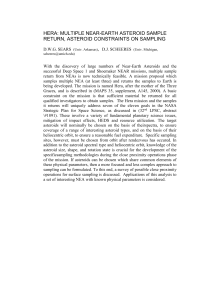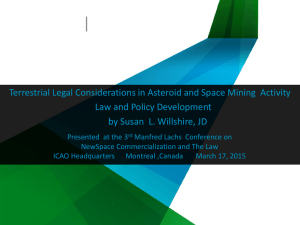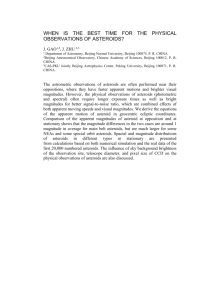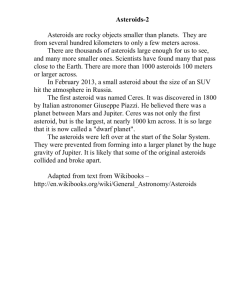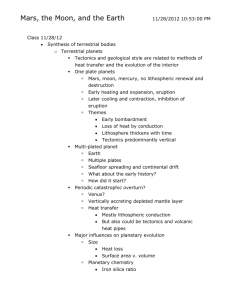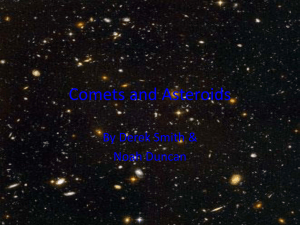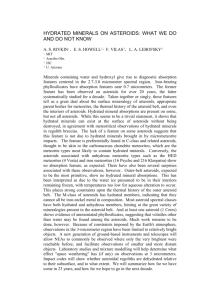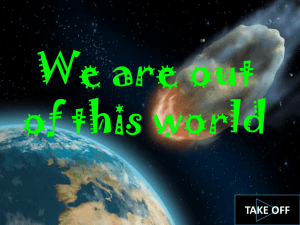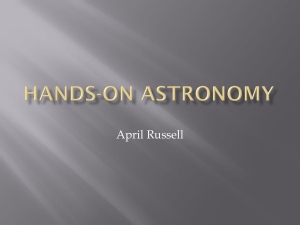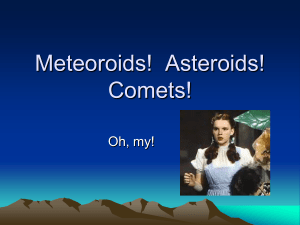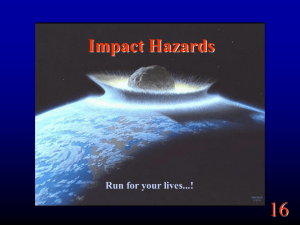Asteroid, Russian Meteor, can we know about
advertisement
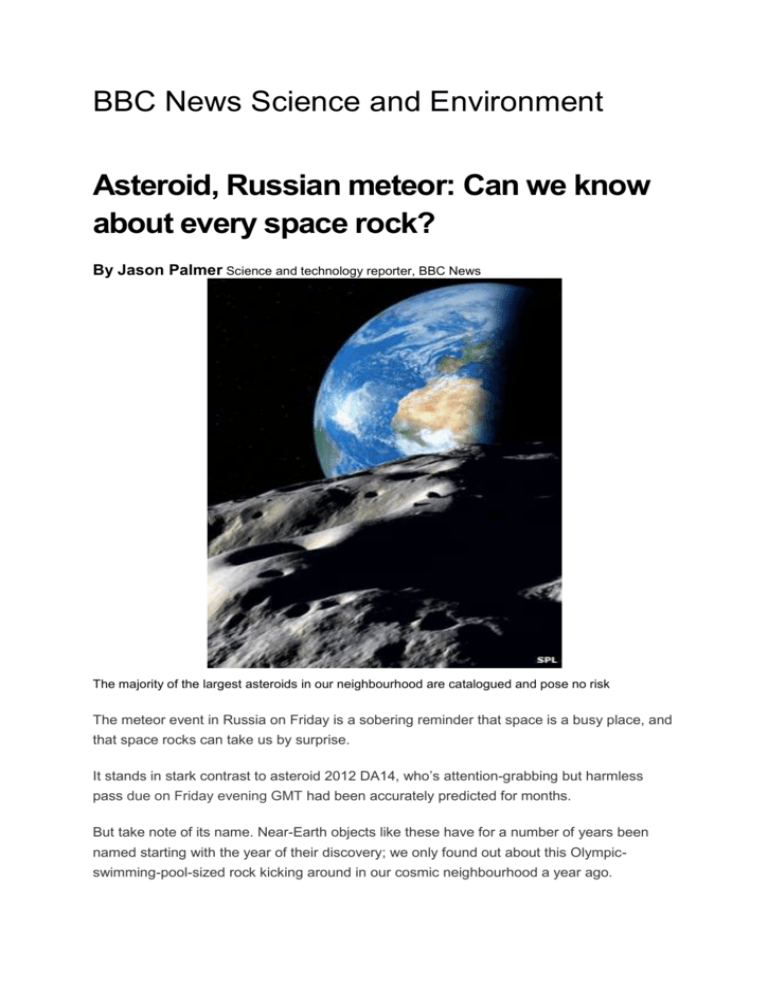
BBC News Science and Environment Asteroid, Russian meteor: Can we know about every space rock? By Jason Palmer Science and technology reporter, BBC News The majority of the largest asteroids in our neighbourhood are catalogued and pose no risk The meteor event in Russia on Friday is a sobering reminder that space is a busy place, and that space rocks can take us by surprise. It stands in stark contrast to asteroid 2012 DA14, who’s attention-grabbing but harmless pass due on Friday evening GMT had been accurately predicted for months. But take note of its name. Near-Earth objects like these have for a number of years been named starting with the year of their discovery; we only found out about this Olympicswimming-pool-sized rock kicking around in our cosmic neighbourhood a year ago. A month before that, one called 2012 BX34 whizzed by at a distance of 65,000km (41,000mi) - that one had only been discovered two days before. And a few years before that, an 80-tonne space rock called 2008 TC3 ploughed into the Earth's atmosphere, largely burning up and scattering fragments over the Sudan - just 20 hours after it was discovered. The list goes on. The point is that astronomers say that we don't know anything about 5 or 10% of the near-Earth asteroids that are larger than 1km in size - 20 times larger than this week's visitor. That's possible civilisation-ending stuff. Below that 1km size, the fraction of as-yet undiscovered objects gets a lot larger. "People think that in this day and age we've got this problem covered," said Stephen Lowry of the University of Kent. "We're far from covering this problem." The good news is that below a certain size, depending on what they're made of, some nearEarth asteroids don't pose any danger, burning up as they pass through the atmosphere. Friday's example in Russia was not actually too far above that threshold. But there's still a considerable gap in our knowledge of space rocks that size and larger. The truth is, even if back in 1908 we had the current array of "surveys" that are constantly scanning the skies, we might well have missed the 100m-wide space rock that devastated a region in Siberia as large as Greater London in Siberia - the Tunguska event. "The key number is objects around a hundred or a few hundred metres," said Dr Lowry. "Those are the ones we need to be really worried about, and trying to observe the skies more so we can catalogue all of them. But we're quite a way off actually doing that." Some help is potentially at hand - the dedicated Asteroid Terrestrial-impact Last Alert System or Atlas, designed to give at least a few days' notice of impending asteroids by scanning the whole sky every night. And as Alan Fitzsimmons of Queens University Belfast points out, the existing surveys are slowly chipping away at the problem. "We must remember that the surveys that are going on are... doing a fantastic job, as we can tell by the fact that we're now at more than 800 new objects every year... without those, we'd know of very few of the more than 9,000 objects we have on our books," he told BBC News. Yet, I ask, couldn't we be taken by surprise in the middle of the night by a completely devastating, completely unknown asteroid? "Yes we could, and in fact the most likely scenario at the moment is that the next impact will occur with very little warning," he said. The Tunguska event flattened trees for kilometres around - an area the size of Greater London Because the big ones are more likely to be known, the odds are in our favour on that one. And any notice at all would help - thanks in large part to the contribution of amateur asteroid enthusiasts who plot out the precise paths of asteroids spotted by those surveys, we know a lot more about how to mitigate the effects of an eventual impact. Prof Fitzsimmons recalled the situation with 2008 TC3, which hit less than a day after it was discovered. "Although we couldn't do anything in terms of deflecting it - and didn't need to, it was only a few metres across - within a few hours the impact point and the exact time of impact were known incredibly accurately. "What that did show us is that if we did spot one of these objects on an impact trajectory, we do have the capability to assess its risk." As Dr Lowry puts it, however, an eventual impact scenario, even if we know ahead of time, is inescapable. "It is a mathematical certainty that one of these objects will hit at some point in the future asteroids have been hitting Earth throughout its history, and we're fairly sure major impacts have been responsible for one major extinction," he said. "Mankind has always had this gun pointed at its head; we're just lucky we're in a time when we have the technological capability to search for these things and try and develop a way of dealing with them. "But don't lose any sleep about it." Collision course There are millions of asteroids in our solar system - most have stable orbits in the asteroid belt, a region between Mars and Jupiter An asteroid becomes a Near Earth Object (NEO) when it gets pulled into the Earth's vicinity by the gravity of nearby planets Our atmosphere protects us from smaller asteroids but larger ones could be dangerous Impact asteroids larger than 1 kilometre could be catastrophic; a collision of this scale occurs about once or twice every million years Reference BBC (2013) Asteroid, Russian Meteor, can we know about every space rock? ‘http://www.bbc.co.uk accessed 15/02/2013
